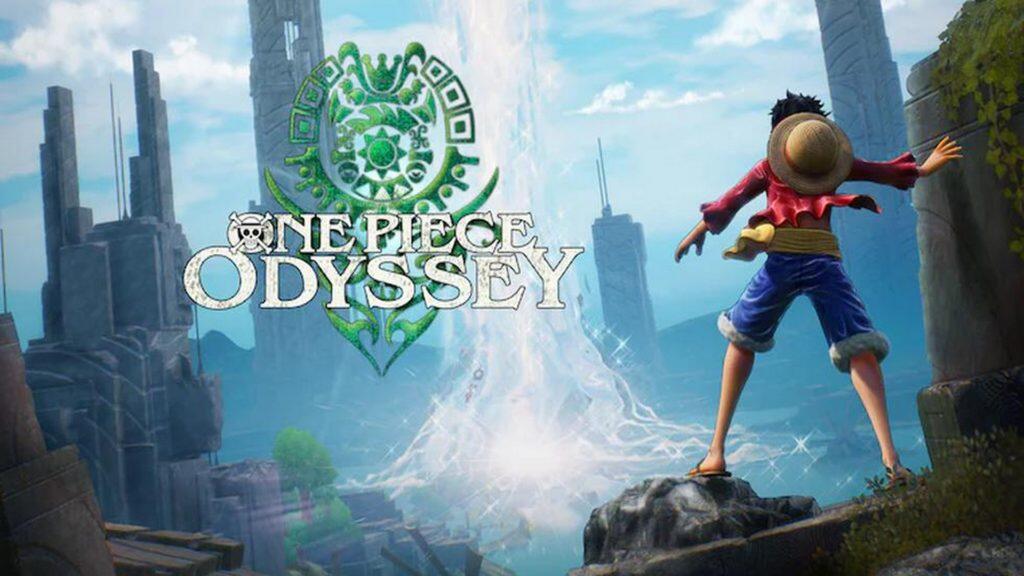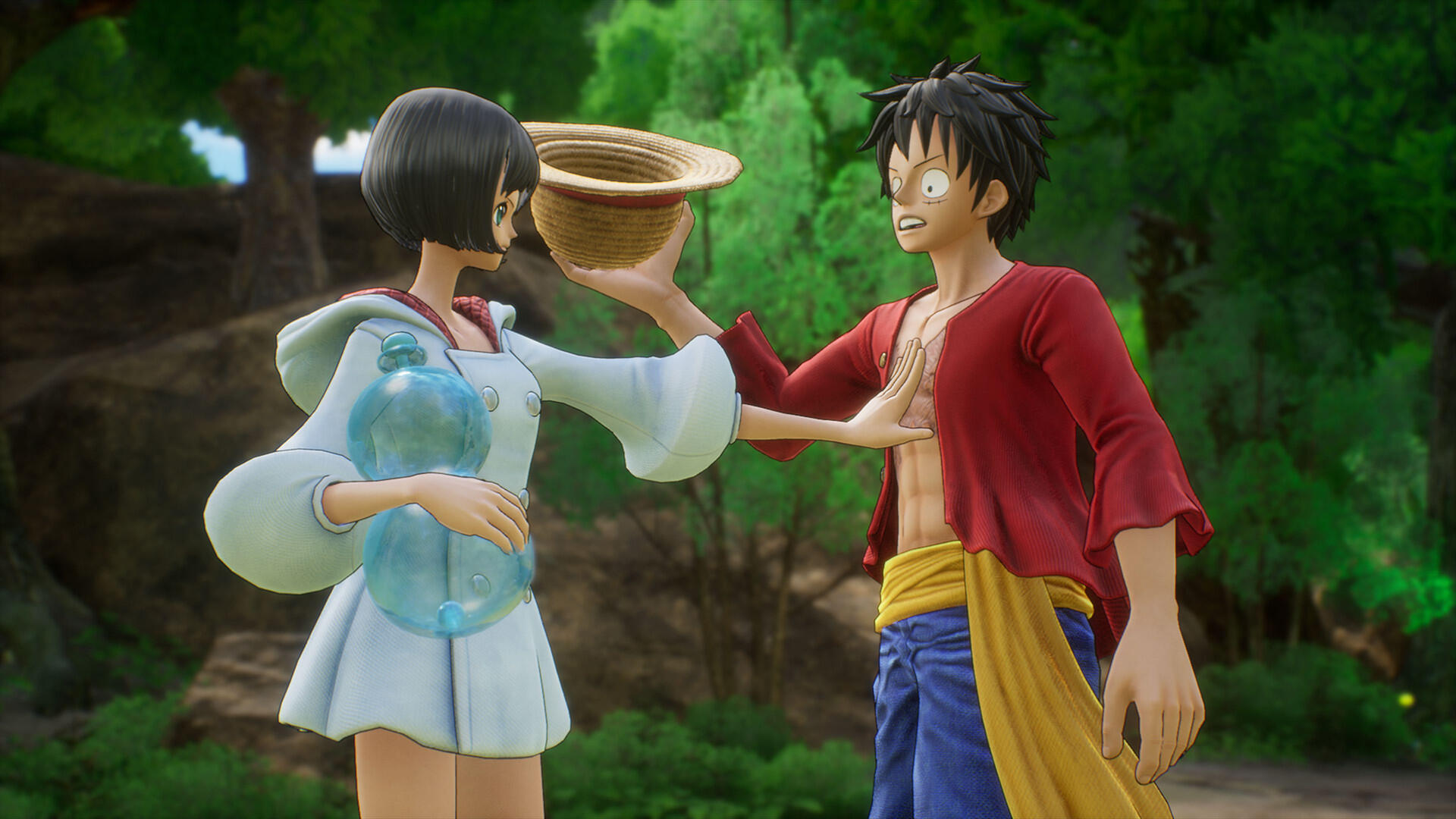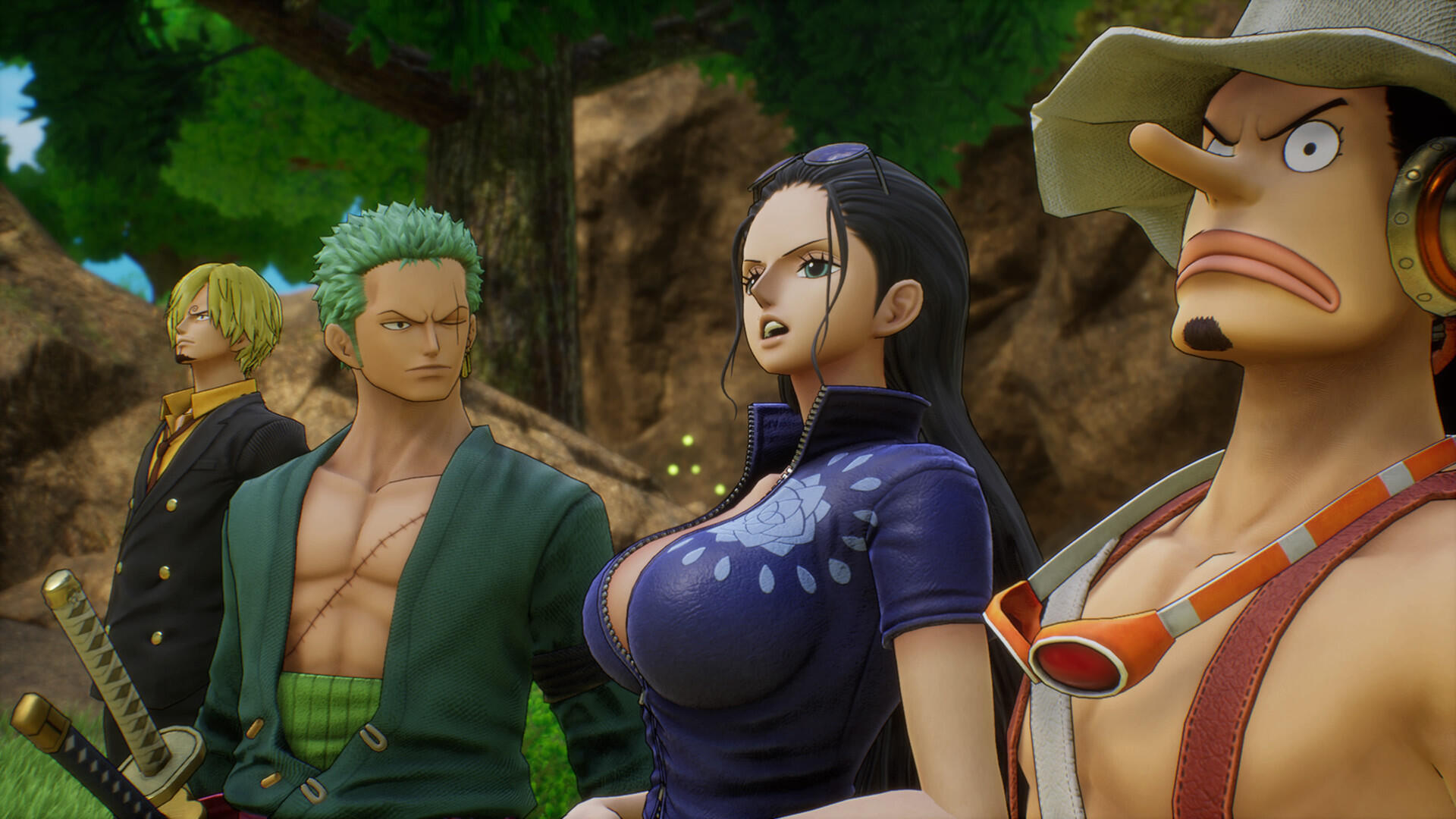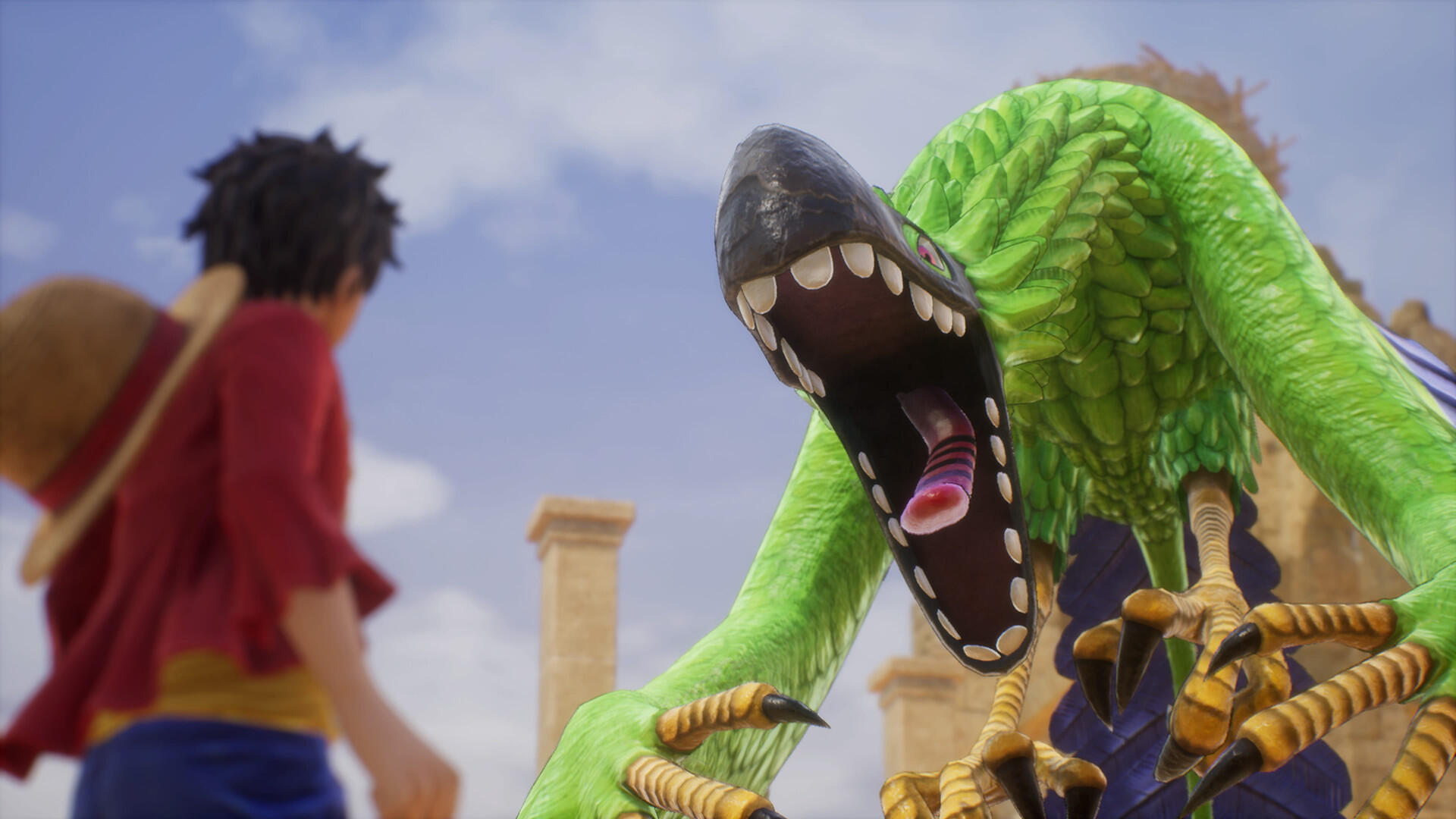
Monkey D. Luffy and the Straw Hat Pirates are over a thousand episodes into their journey, yet somehow, Eiichiro Oda found a way to craft a brand-new story for the crew. ‘One Piece Odyssey’ is a brand new JRPG created by ILCA and published by Bandai Namco. Despite being set in the ‘New World arc’ storyline, there hasn’t been a better game for those curious to get into the Universe, so make sure to read on to find out why. One Piece Odyssey will release on the last and current generation of Playstation, Xbox One, and Series X|S, alongside Windows for PC.
In the middle of a death-defying storm, Luffy and his crew are left stranded on an island in the middle of nowhere and their ship ‘Sunny’ has been wrecked in the ensuing chaos. Introductions are kept to a minimum at first which adds to the mystery of the island known as Waford, as the crew pick themselves up and tackle the Islands’s harsh environments and creatures. The nice middle ground of those well versed in One Piece’s story and those just starting, plays out before the end of the first chapter. A young girl dwelling on the island named Lim, removes everyone’s powers in an act of desperation, and the only way to restore them, is to conquer the island and versions of their past.
The main setting belongs to Waford, an oasis brimming with tropical fauna and fascinating ruined structures that are currently being plagued by Colossus’ and wildlife. The ability to travel to a version of their past to rebuild their powers offers both variety in environments and story setting. Revisiting a location from Luffy’s past, Alabasta, was at the edge of the harsh desert that was teeming with Kung Fu Dugongs and giant Scorpions was hilarious and nostalgic. All the way to more recent locations in the Straw Hats’ journey such as Dressrosa with the rocky walls surrounding the island that contains the stoic city set piece. This is truly a beautiful game and I would highly recommend running this on ‘performance’ mode over the “graphics’ mode for the smoothest experience possible.

The fact that the entire cast of Japanese voice actors have been brought on is the icing on the cake to selling this world. The bickering between Sanji and Zoro with Nami scalding both of them was music to my ears. Pair the outstanding voice acting with the whimsical and dynamic musical score by Motoi Sakuraba, who was able to rise and match the tone of multiple locations; it was a beautiful combination.
The charm of the Straw Hat Pirates was never tied to just one member either so the decision to include the whole crew was such a blessing. Luffy, the ever-lovable, yet simple leader that knows no fear and remains forever hungry is only one piece of the puzzle.
Zoro, Nami, Sanji, Robin, Usopp, and Tony Chopper are also all playable from the get-go with each and everyone bringing something to the table whether it be big or small. Being able to free roam the locations with any one of these seven characters as the party leaders lets you oversee your adventure how you please but rotating through the crew will offer some advantages. This style of gameplay of switching out characters to min-max your resource gathering could have been a little more intuitive, there was rarely an environmental puzzle to solve which could have added to the excitement.
Luffy, with his rubber arms, can Gomu Gomu No his way to higher locations, while Nami’s eye for treasure can lead to hidden pockets of money. Chopper, with his smaller statue, can amble his way through small openings and Zoro can find weak locations to cut his way through for the crew to follow. The different skill sets meant that searching an area while switching characters before moving on could yield plenty of loot and resources. I find this a nice touch to liven up your travel, as the option to fast travel isn’t introduced until later so the exploration sections of the game are carried out on foot.

All of the pleasing details to fans of new and old come together for the engaging and stylish combat system. The turn-based combat has been given its own flavour to spice things up, just like Sanji’s cooking. When combat starts, the battlefield is segmented into four playable areas and your team is split up to face their own groups. Since you can only have four characters active at a time, you will need to quickly dispatch the enemy groups and consolidate your team into the same area for maximum efficiency.
The free-flowing aspect of this setup, however, is being able to rotate your active team out with the inactive members for free or move your characters between the four areas. Why would you do this? Well, the trinity of Technique, Power, and Speed means that the Powerful Luffy may do limited damage to a Technique-based enemy, so switching the speed-based Nami to his location means her normally weaker attacks will inflict critical damage. The base attacks cost nothing to use but will earn you TP (tension points) and also Bond energy once you have unlocked this feature.
There are also Skill attacks that can be used with the limited TP, which are big showcase moves that can attack one or multiple enemies, cause bleed damage, paralysis enemies or go as far as push an enemy into another area. The flow of combat is deeply satisfying and the Bond attacks can combine multiple characters for cinematic devastation.
There is also a mode to switch to an auto-battle queue that will get you by in the majority of situations but will most likely be worse for wear if you rely on it. A cardinal sin in most turn-based combat does come in the form of long or un-skippable animations and I am happy to report that you can at least speed up the animations for short and snappy feedback.

The combat and exploration loop leads to collecting food ingredients, resources, experience, and those sweet sweet stacks of money. At the base camps, you can go to Sanji to cook stat-boosting meals to use in and out of combat, create consumables from Usopp’s craftsmanship that can aid you in battle, and throw a party for extra boosts for the next few fights. It was a great in-game economy system that compliments the gameplay, the experience points earned in battle were very generous as well so I was constantly levelling up and unlocking new abilities.
In terms of upgrading your characters, the smart and streamlined menu makes things run smoothly. Finding the power cubes that were created when your powers were taken will let you level up pre-set abilities. Outside of that the only way to upgrade your characters was with wearable items that would boost certain stats such as total health, attack power, or resistance types. The game didn’t have a difficulty setting so I would say that I would comfortably cruise through the game for the most part, which encouraged me to use my items and experiment with my abilities on groups of enemies with low risk.
For a one-stop shop of all things Straw Hat, One Piece Odyssey is an incredible amalgamation of storytelling, gameplay, and charm. The authenticity, the memorable revisits of older locations in Luffy’s adventure, and the addictive combat and exploration loop has me enthralled and always wanting more.

The Good
- Original voice cast
- Dynamic and fun combat loop
- Visually and musically pleasing
- Auto battle toggle and speed up animation options
- Authentic One Piece story telling and locations
- Fair in game economy
- Accessible to new and old fans
The Bad
- Difficulty was easy at times
- You will be on foot for majority of the game
- Environmental puzzles were lacking








